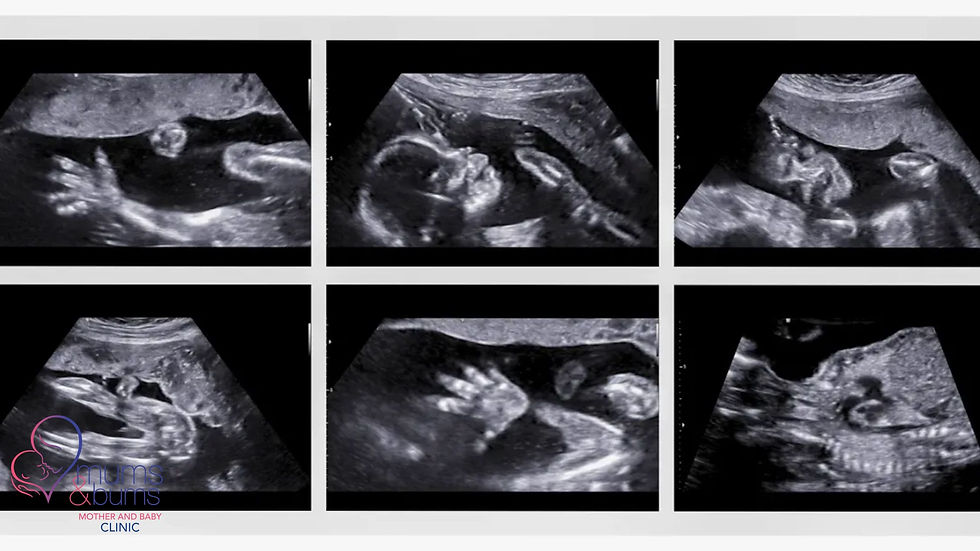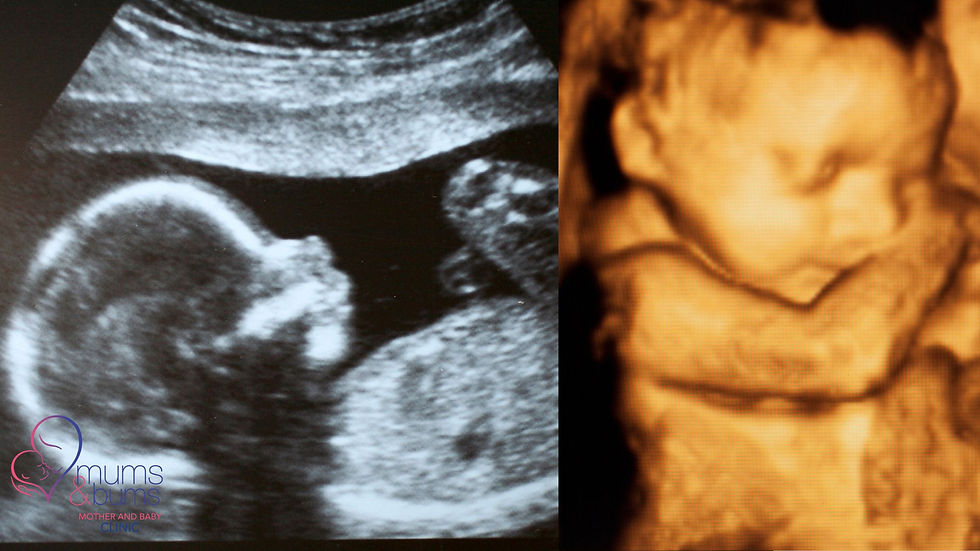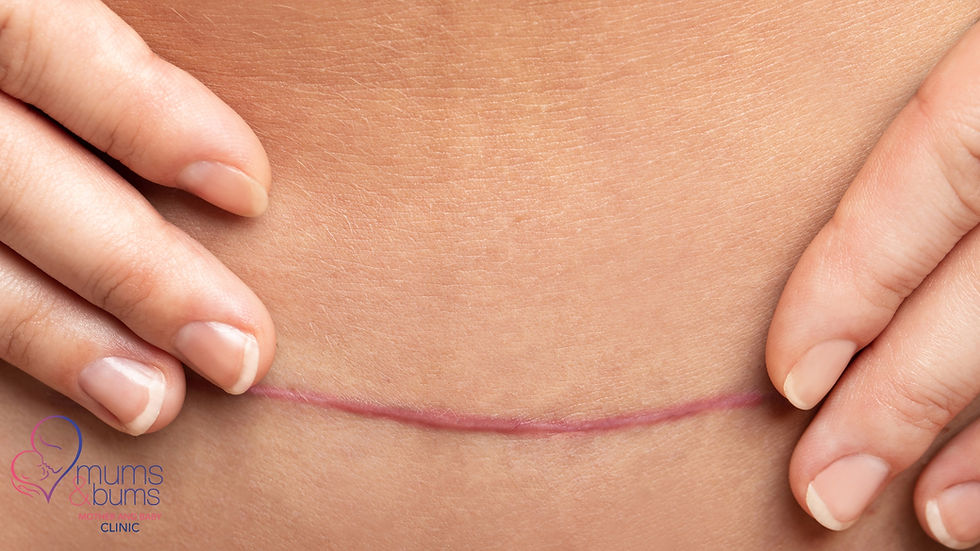Pregnancy Ultrasounds: When to Book One and What Each Scan Tells You
- Samantha Pieterse

- Jul 29
- 8 min read

From the moment you see those two lines, you probably can’t wait to see your baby too. Ultrasounds are one of the most exciting parts of pregnancy. They turn all the weird symptoms and what-ifs into something real.
But how many scans do you actually need? Are they safe? And why do certain ones matter more than others?
Let’s break down the when, the why, and the what-you’ll-see, so you know exactly what to expect and when to book.
Curious about what your first check-up looks like?
Do I Need an Ultrasound at Every Pregnancy Checkup?
Short answer: no.
Reassuring answer: You will get the important ones at the correct times, and they tell us so much about your baby’s health, growth, and even birth planning.
So while you don’t need an ultrasound every time you pop into your clinic for a check-up (although you can, who doesn’t love a sneak peek?), there are specific milestones where ultrasounds are especially necessary.
Are Pregnancy Ultrasounds Safe for My Baby and Me?
Pregnancy ultrasounds are safe when done by trained professionals. They use sound waves (not radiation like X-rays) to create a picture of your baby in the womb. It’s non-invasive, completely painless, and has been a trusted part of prenatal care for decades.
There’s no evidence that ultrasounds harm you or your baby, and they’re handy for tracking growth, development, and helping guide decisions about your care.
That said, you don’t need to have an ultrasound at every checkup if you don’t want one. Some parents choose to do more for peace of mind or bonding, while others stick to the key milestone scans, and that’s perfectly okay too. What matters most is that the essential scans are performed at the right times, when they provide the clearest picture of your little one's health.
So whether you’re team “scans at every turn” or “keep it simple,” know that you’re doing just fine. We’ll guide you on which ones are most helpful and when to book them.
When Should You Have an Ultrasound?
Here’s a simple breakdown of when ultrasounds are most useful and what each one looks for.
Before 8 Weeks: Wait It Out
We get this a lot:
“Can I do a scan at 5 or 6 weeks just to check I’m really pregnant?”
And we get it, those first few weeks can feel like forever. But here’s the thing: before 8 weeks, it’s often too early to see much on an ultrasound, even if everything is progressing perfectly.
At 5 to 6 weeks, you might see a small gestational sac inside the uterus, and sometimes a yolk sac. But don’t be alarmed if you don’t see a baby or hear a heartbeat yet.
That’s because the fetal heartbeat only starts developing around 5½ to 6½ weeks, and it's usually only visible and detectable on a scan from 6 to 7 weeks onward, depending on your baby’s exact size, your cycle timing, and even the quality of the ultrasound equipment.
By 8 weeks, most scans can clearly show:
A gestational sac inside the uterus.
A yolk sac.
A tiny baby (called the “fetal pole”).
And that magical flicker, the heartbeat.
Trying to scan too early can sometimes cause more stress than reassurance. If the heartbeat isn’t visible yet, it can lead to unnecessary worry and repeat scans, even when everything is completely fine.
Unless there’s a specific medical concern, we usually recommend waiting until you’re at least 7½ to 8 weeks before undergoing your first ultrasound. That way, you’re more likely to walk out with answers and not unnecessary stress.

8–9 Weeks Scan: The Early Viability Check
This will be your first proper scan, and it does a lot in one go. At this stage, your healthcare provider can usually:
Confirm that the pregnancy is in the uterus (important for ruling out an ectopic pregnancy).
Check for a heartbeat.
See the fetal pole and yolk sac.
Estimate your due date based on your baby’s size.
Depending on how far along you are and how visible everything is, this scan might be done transvaginally. That means the probe is gently inserted into the vagina, which gives a clearer image in early pregnancy before the uterus is high enough for an abdominal scan. It’s safe, not painful (though a little awkward, we know), and helps get an accurate view, especially when your baby is still just a few millimeters big.
This early scan is especially helpful if:
You’ve had bleeding or cramping.
You’ve had a previous miscarriage or ectopic pregnancy.
You’re not sure of your dates.
You’ve had irregular cycles or were on contraception when you conceived.
It’s often one of the most emotional moments for parents, hearing that first tiny heartbeat flicker away on the screen. Yes, it’s normal to cry.
📍We refer our patients to LifeScan Studio for this scan. Their team is kind, gentle, and experienced with early pregnancies, plus they usually will give you same-day feedback so you're not left waiting and wondering.

11–14 Weeks Ultrasound: Nuchal Translucency/Early Anatomy Screening
This is often considered the first major milestone scan. It’s done between 11 and 14 weeks, when your baby has grown enough to start checking some of the finer details, but is still early enough to screen for certain conditions.
This scan looks at:
Baby’s overall growth so far: Measuring the crown-to-rump length and ensuring everything is on track.
Nuchal translucency: A small fluid-filled space at the back of your baby’s neck. Measuring this helps screen for chromosomal differences like Down syndrome, especially when combined with your age and blood test results.
Basic anatomy: Arms, legs, brain, bladder, stomach, spine, and other early structures are starting to take shape.
Your estimated due date: This is one of the most accurate times to confirm your due date if you haven’t had a scan yet.
You might also be offered non-invasive prenatal screening (NIPS) or first-trimester blood tests around this time. These help calculate your baby’s risk for genetic conditions using a combination of your scan results, blood markers, and maternal age.
This is one of the most exciting scans because your baby actually looks like a baby. At this scan, you might see them stretching, kicking, or even giving a little wave. It’s also the stage where some parents start sharing the news with family and friends, especially after getting reassuring results.
Tip: You’ll get the best results when a sonographer does this scan with training in first-trimester screening, like the professionals at LifeScan Studio.
This is a great time to start thinking about your birth prep. Check out our antenatal classes.

20 Weeks: The Detailed Anatomy Scan
This is the most detailed ultrasound of your entire pregnancy, and it’s a little magical, too. By 20 weeks, your baby has grown enough for us to do a full top-to-toe check, and you'll likely be amazed at how much you can already see.
During this scan, the sonographer will carefully examine and measure:
The brain, heart, kidneys, and bladder.
The spine and limbs, including fingers, toes, arms, and legs.
Facial features, including the nose and lips (to screen for things like cleft lip).
Placenta location and function.
Amniotic fluid levels.
The umbilical cord.
Your cervix length, to help assess risk for early labour.
The main goal of this scan is to screen for major physical abnormalities or signs that your baby might need extra monitoring or care after birth. Most of the time, the results are completely normal, which is always reassuring.
It also provides another opportunity to monitor your pregnancy's progress, confirm your due date, and begin preparing for childbirth with more accurate information.
Bonus: In many cases, you can also find out your baby’s gender, if they’re not feeling shy and decide to show off their bits! (Though of course, it’s not 100% guaranteed.)
Expect this scan to take 20 to 40 minutes, and sometimes longer if your baby isn’t in a good position. Some parents even choose to bring their partner or a loved one to this one. It’s a bonding moment and a great one to bring home that little printed picture.

36–38 Weeks Ultrasound: Position Check Before Birth
By this stage of pregnancy, most babies have settled into their final position for birth, ideally head-down. But not always.
While a 36–38 week scan isn’t necessarily routine, it can be incredibly helpful in certain situations. We usually recommend it if:
We’re not sure if your baby is head-down, especially if we can’t feel the position clearly during your check-up.
There’s concern that your baby might be measuring smaller or larger than expected.
You’re planning a vaginal birth, and we want to confirm that your baby’s in the right position for labour.
This scan checks for:
Baby’s lie, whether they’re head-down (cephalic), breech (bum down), or lying sideways (transverse).
Amniotic fluid levels.
Estimated weight (although take this with a pinch of salt, it’s never 100% exact!).
Placenta location, just to ensure it’s not low-lying or blocking the cervix.
Knowing this information helps us plan how and where you’ll give birth. For example, if your baby is breech or still lying sideways, we may need to discuss turning techniques (like external cephalic version) or preparing for a C-section if needed.
Even if everything looks great, this scan can be wonderfully reassuring, especially as you head into the final weeks and start picturing your baby’s arrival.

Who Does Pregnancy Scans?
At Mums & Bums, we focus on personalised pregnancy care, but we don’t perform ultrasounds in-clinic. Instead, we refer our moms to trusted sonographers like LifeScan Studio, who offer high-quality, detailed scans.
We’ll guide you on when to book, what to ask, and what to bring, and then help you interpret the results once you’re back with us.
Can I Have a Scan Just for Fun?
You can absolutely have more ultrasounds if you want to. While there are key scans we recommend for medical reasons, there’s nothing wrong with booking extra ones for peace of mind, connection, or just to soak in the magic.
Many parents choose to do a 4D scan later in pregnancy, often between 26 and 32 weeks, when their baby’s facial features are more defined. It’s a beautiful experience to watch your baby yawn, suck their thumb, or squish their cheeks.
The important thing is to go to a reputable ultrasound studio with trained professionals, proper equipment, and a safe, comfortable environment.
At Mums & Bums, we’re always happy to help you time your scans, whether it’s for a medical milestone or just a little extra peek at the one you already love so much.
A Quick Recap: Pregnancy Ultrasound Timeline
Weeks | Purpose |
< 8 weeks | Usually, it's too early. Wait a bit. |
8–9 weeks | Confirm pregnancy, rule out ectopic, and determine the due date. |
12–13 weeks | Nuchal translucency, early anatomy. |
20 weeks | Full anatomy, gender reveal if possible. |
36–38 weeks | Check your baby’s position before birth (if needed). |
Let’s Keep You Reassured During Your Pregnancy
Pregnancy is full of questions, flutters, and decisions. Our job is to help you feel prepared, informed, and supported.
At Mums & Bums Centurion, we:
Track baby’s growth and your health.
Help you time and book your ultrasounds.
Offer personalised pregnancy checkups, prenatal classes, and baby care under one roof.
👉🏻 Need guidance on your next scan? Book a consult here.
👉🏻 Want to prep for birth? Our antenatal classes are small and answer all your questions. Find out more here.
Questions About Your Pregnancy Timeline?
Give Mums & Bums Centurion a Call.
Whether you’re wondering when to book your scan or what’s really happening in week 13, we’re here to walk it with you.
🍼 Mums & Bums Mother & Baby Clinic in Centurion
💬 Friendly care, expert advice, and space to ask everything you’re thinking.



















Comments